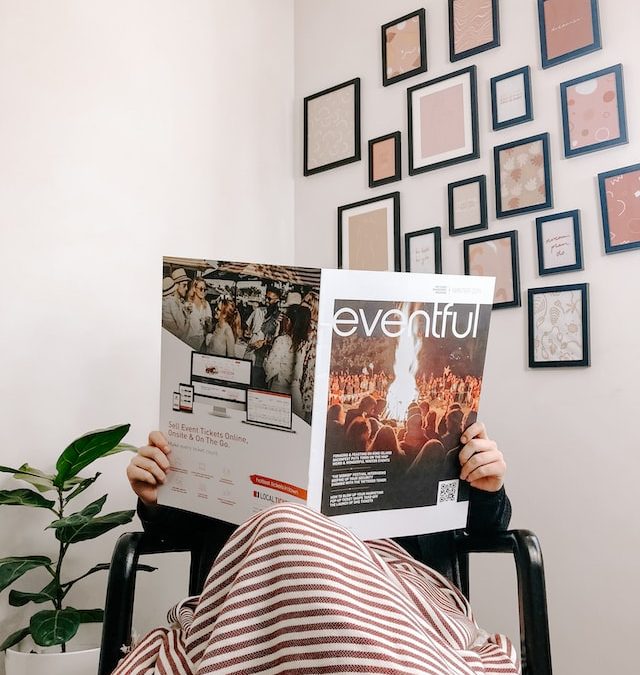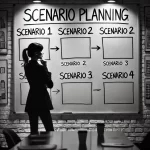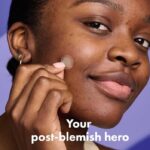A Guest Blog Post from Leah Collins About Event Marketing
The most challenging yet crucial aspect of planning an event is marketing and promoting it.
It’s not easy determining who you want to target, the best ways to reach them, and ways to encourage them to sign up. However, getting the word out there is necessary if anyone is to show up at your event.
The biggest lesson I learned from my first event is not only how important executing an event smoothly is but also advertising it effectively. It was overwhelming, and I was all over the place. But one thing that remains clear is that the event would have failed flat if I hadn’t marketed it correctly.
And by this, I mean dedicated time for digital activities and encouraging word-of-mouth marketing by making it easy to share information about our event with others.
Defining the goals and my target audience
Having a goal for the event marketing is critical as it forms the basis for everything else that follows. The same goes for identifying the target audience for the event. The main goal of my first event was to increase brand awareness. Setting this as the primary goal helped me focus the marketing efforts on achieving it, which was instrumental in staying on track.
Next, I thought of the people I wanted to target with the event.
Of course, it had to be people who would buy my products. So, I looked at factors such as gender, age, interests, location, occupation, etc. Who bought my product in the past? What can I infer from the visitors to my website about where they live or other analytics?
I was able to tailor the marketing strategy accordingly. Think the content, tone of voice, and design of the marketing materials – all had to resonate with the target people. I also focused not just on demographics but also on mindsets and how to reach people who were open to trying new things – and interested in being early adopters. I thought about avant-garde bands that would draw those always looking for the next thing.
Determining Communication Strategy
Event advertising is all about communicating with the target audience. It is essential to consider how to communicate effectively. Once you have your goals and target audience defined, this is easier. The communication strategy for my first event included:
- Creating an event website – This is a platform where my prospective attendees were directed to sign up. I concentrated on creating a great user experience to drive results. I kept things simple and removed as much friction as possible.
- The value proposition – Telling my audience what they stood to gain by attending the event. That was part of the key messaging that I carefully developed.
- Content creation helps build anticipation and excitement before the event, which nudges people to sign up. I used blog posts, videos, and infographics. Since I didn’t have content from previous posts, I interviewed key speakers on a bit of their background, letting the target audiences into the speakers’ expertise.
- Email marketing – I sent several emails to my email list of existing customers who lived near the event. The goal was to keep them engaged and nudge them gradually to act. However, timing and the number of emails are essential. You don’t want to flood their inboxes and turn out annoying. I also segmented the emails to ensure that every message was relevant to the person receiving it.
Creating a Buzz on Social Media That Fits the Brand’s Voice
Social media is the go-to place for everything advertising since it offers a platform to connect and engage with the audience. Done right; social media can get many people talking about your event. Besides promoting it online, it can increase word-of-mouth as well. What I did for social media was:
- Collaborating with speakers, sponsors, vendors, and influencers – We all had the same goal: maximizing attendance. Involving them in sharing about the event on their social media pages boosted visibility.
- Encouraging attendees to share about the event – Creating shareable, engaging content and catchy hashtags created excitement that subtly nudged attendees to share with their networks.
- Creating an event community gave attendees a place to interact virtually before the event. We made contests and challenges, encouraged people to ask questions and add comments, and we made sure to answer and engage them promptly.
The Tools I Used
Developing an event marketing plan isn’t easy without the best tools.
Besides the event website, I had several other tools such as an interpretation system, website builder, emailing system, event management software, and project management tool. These tools eliminated a lot of manual processes, making the process smooth.
I chose event management software that combined several capabilities, such as social media scheduling, generating reports, managing registrants, email templates, and data analytics.
Conclusion
The success of any event relies on effective marketing that is on-brand, on-target, and on-budget.
Although I was an event rookie, I knew the importance of effective planning and learning from others. It can be daunting, but learning from my first event, defining the goal and target audience, creating communication and social media strategy, and employing the right tools can bear positive results.
And when the event was over, the team that worked on the project met to do a post-mortem. We simply asked if we had it to do all over, what would we change?
I can’t wait to get started on the next event.
Leah Collins is a passionate writer who appreciates everything about her profession as a training specialist. Aside from writing, she likes reading, listening to music, and wandering in nature.
Photo by S O C I A L . C U T on Unsplash
You can set up a time to chat with me about your marketing challenges using my calendar. Email me jeffslater@themarketingsage.com Call me. 919 720 0995. The conversation is free, and we can explore if working together makes sense. Watch a short video about working with me.





